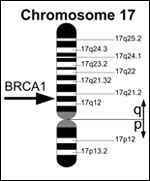MBCC: PARP Inhibitors for Breast Cancer-Which Subpopulation to Target?
Breast cancer tumors that have a loss of function in DNA-repair genes like BRCA1 and BRCA2 may be particularly sensitive to PARP inhibitors such as olaparib.
Speaking at the 29th Annual Miami Breast Cancer Conference, Jorge S. Reis-Filho, PhD, MD, professor of medical pathology at the Institute of Cancer Research in London, England, described the rationale of applying poly (ADP-ribose) polymerase inhibitors (PARP) to breast cancer patients.
Tumors that have a loss of function in DNA-repair genes such as BRCA1 and BRCA2, and homologous recombination, as Dr. Joyce O'Shaughnessy described during her session on emerging triple-negative breast cancer therapies, may be particularly sensitive to PARP inhibitors.

Reis-Filho highlighted that sequencing tumors may not be enough to characterize whether tumors have intact DNA-repair pathways-tumors also have epigenetic changes that regulate homologous recombination.
This is why he and collaborators are developing surrogate markers-to assess the homologous recombination competence of a patient's tumor. He believes that a simple assay could be used as a predictive marker to test whether a patient is more likely to respond to a PARP inhibitor.
"The idea is to use a simple marker, a target of homologous recombination, RAD51. I think this is the most straightforward way to identify patients that would benefit," Reis-Filho told CancerNetwork. Reis-Filho believes a way to attempt to show that patients with defective homologous recombination have better responses to PARP inhibitors, would be to start with already available tumor samples from PARP inhibitor clinical trials.
PARP Inhibitors-A Call to Action
"I still have hope that with homologous recombination, there will be patients that we can target that have recombination defects and may benefit from PARP inhibitors and from inducing double-stranded breaks. We need to be able to identify these patients," said O'Shaughnessy during her presentation.
Reis-Filho has a method to better identify these patients.
"I think the thing to do now is to go back to some of these trials, look at the tumor samples, and test this hypothesis-are the patients that responded to the PARP inhibitor the ones that have homologous recombination defects?" he explained to CancerNetwork.
The results with PARP inhibitors such as olaparib in patients with BRCA1 and BRCA2 mutations are very positive, says Reis-Filho. "But there are no phase III trials for patients with mutations in these genes. But that is where PARP inhibitors are bound to work," he says.
Reis-Filho pointed out that there are several PARP inhibitors in development, including olaparib, veliparib, and MK4827, which Reis-Filho said "is very potent, similar to olaparib."
"Even seven years after the original studies, the rationale here is still valid. It is a bit more complex than we anticipated but it does hold true," said Reis-Filho, who wants to see PARP inhibitors tested in a large-scale trial specifically in patients with BRCA1 and BRCA2 mutated breast cancers. "We know that these patients are likely to respond, and we can understand the mechanisms of resistance in these patients."